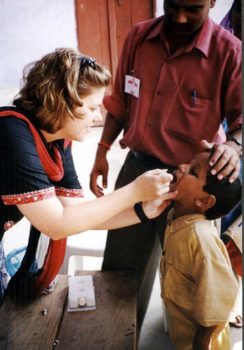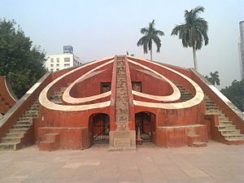child survival
Childhood Malnutrition in India
Part 1: The Science of Nutrition and Malnutrition.
Today’s post is number three in the run-up to my International Reporting Project trip to India where I will be part of a team of 10 journalists covering the topic of child survival. First, I addressed Infectious Diseases, then Vaccinations. Today, we will look at Malnutrition. What is the state of malnutrition in India? How has scientific understanding of what good nourishment means helped us work on the malnourishment issue particularly in developing nations? Can science put an end to world hunger? How are sanitation and hygiene related to malnutrition?
Before we go on, let’s define a few terms so there is no confusion:
- Malnutrition is the condition that occurs when your body does not get enough nutrients.
- Starvation is a severe deficiency in caloric energy, nutrient, and vitamin intake.
- Famine is a widespread scarcity of food, usually accompanied or followed by regional malnutrition, starvation, epidemic, and increased mortality.
- Emaciation is abnormal thinness caused by lack of nutrition or by disease.
- Marasmus is chronic wasting of body tissues, especially in young children, commonly due to prolonged dietary deficiency of protein and calories.
- Kwashiorkor is a syndrome occurring in infants and young children soon after weaning. It is due to severe protein deficiency, and the symptoms include edema, pigmentation changes of skin and hair, impaired growth and development, distention of the abdomen, and pathologic liver changes.

Childhood Vaccines in India, Part 1
Part 1: How vaccines are made and how they work
In 2008, WHO estimated that 1.5 million of deaths among children under 5 years were due to diseases that could have been prevented by routine vaccination. This represents 17% of global total mortality in children under 5 years of age.
Hygiene, proper nourishment and sanitary conditions make for a healthy community, with lowered incidence of infectious disease, but since much of this is lacking in developing countries, vaccination is very helpful to giving the immune system a boost.
We can thank scientists, physicians and engineers for their work in understanding the immune system and how to make it work for us against disease by using vaccinations.
Why am I going to India?
I will be leaving in just a matter of days to go to India with the International Reporting Project as a New Media Journalist to examine the issues of child survival. We will be in Mumbai, Nagpur, and New Delhi with visits to rural and slum areas. The IRP has a full schedule for the ten of us chosen to share our findings with our audiences within social media and blogs.
I made a video explaining why I’m going and what I plan to do to further the understanding of STEM (Science Technology, Engineering and Mathematics) during this trip in relation to child survival issues.
Many of the issues surrounding child survival in India; malnutrition, maternal and fetal care, sanitation, infectious diseases, and vaccinations, can be viewed as social issues, ones that stem from the difficulties of being a developing nation with a tremendously large population, and many of them living below the poverty levels and without education. Segments of India are thriving and growing and on the cutting edge of technology, with some of the most highly educated people in the world, making India a land of disparities.









The Global Epidemic of TB
This article was originally published by Scientific American
Unless you’ve been distanced from the news and the internet, you have heard that tuberculosis has become increasingly drug resistant and is resurging in many areas of the world and this is much more than a minor inconvenience.
Kari Stoever, the Vice President of External Affairs at Aeras – a global nonprofit biotech advancing TB vaccines for the world, has put together a team to create an educational series of videos, which are available in its entirety for screenings, to raise awareness about the re-emerging infectiousness and virulence of pulmonary TB across the world.
12 years ago Blog, Health, Science, Travel • Tags: Aeras, child survival, DOT center, EXPOSED, India, International Reporting Project, Kari Stoever, mHealth, Molecules : The Elements and the Architecture of Everything, Mumbai, Scientific American, STEM, tuberculosis